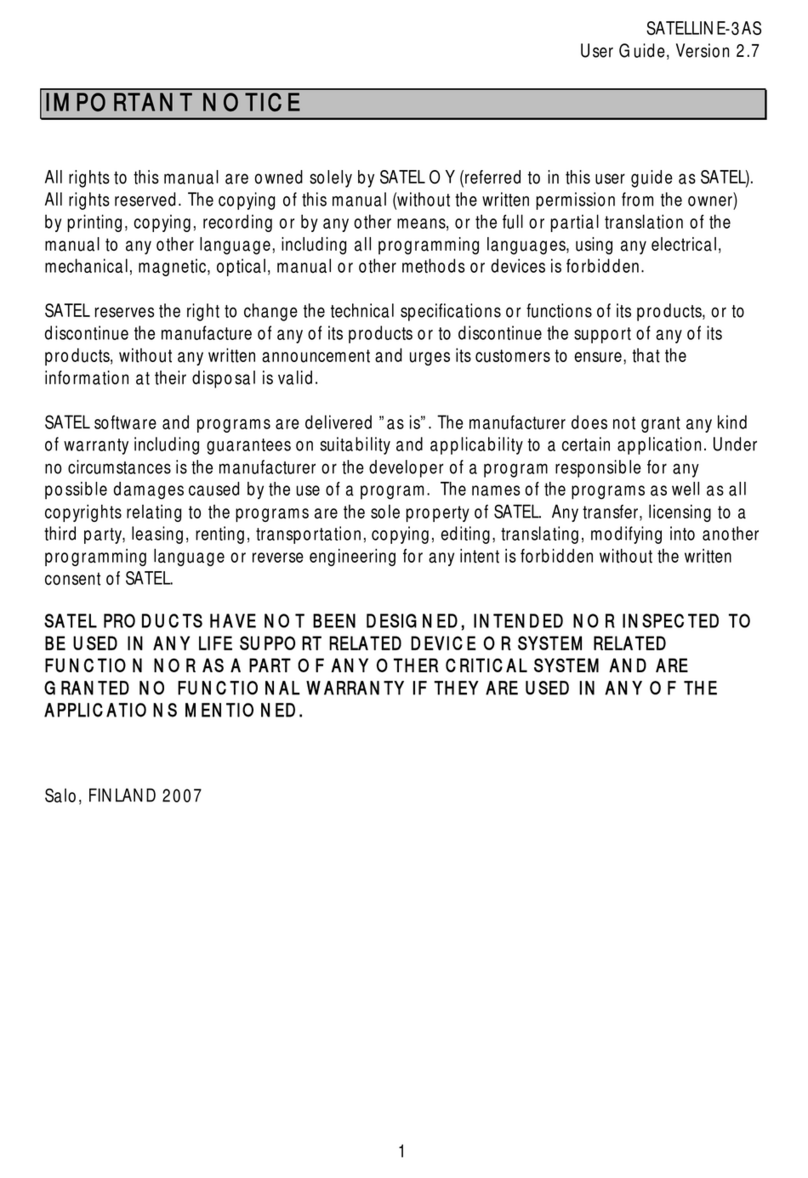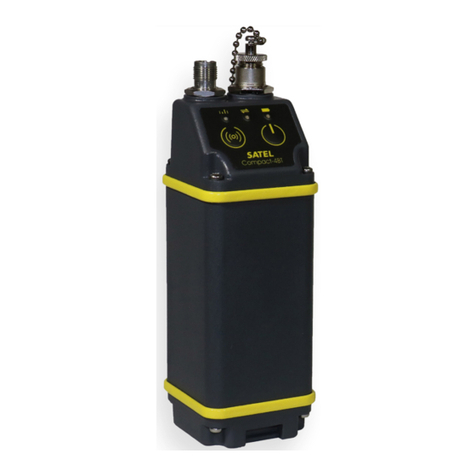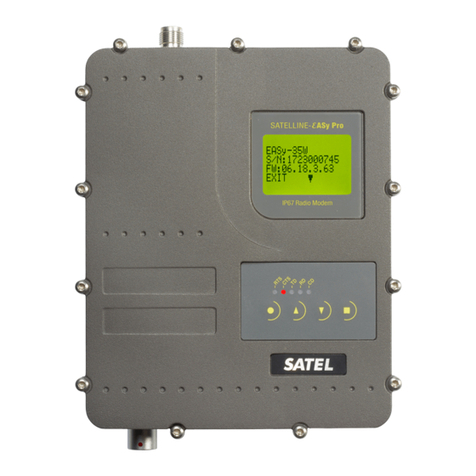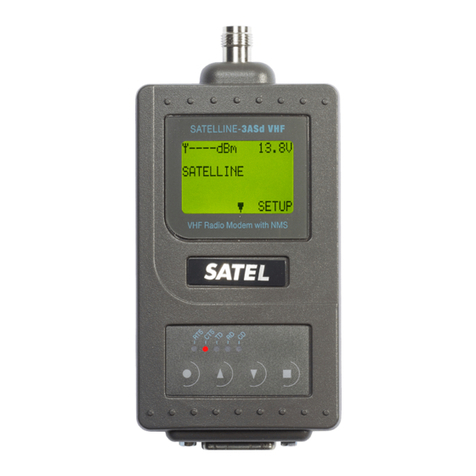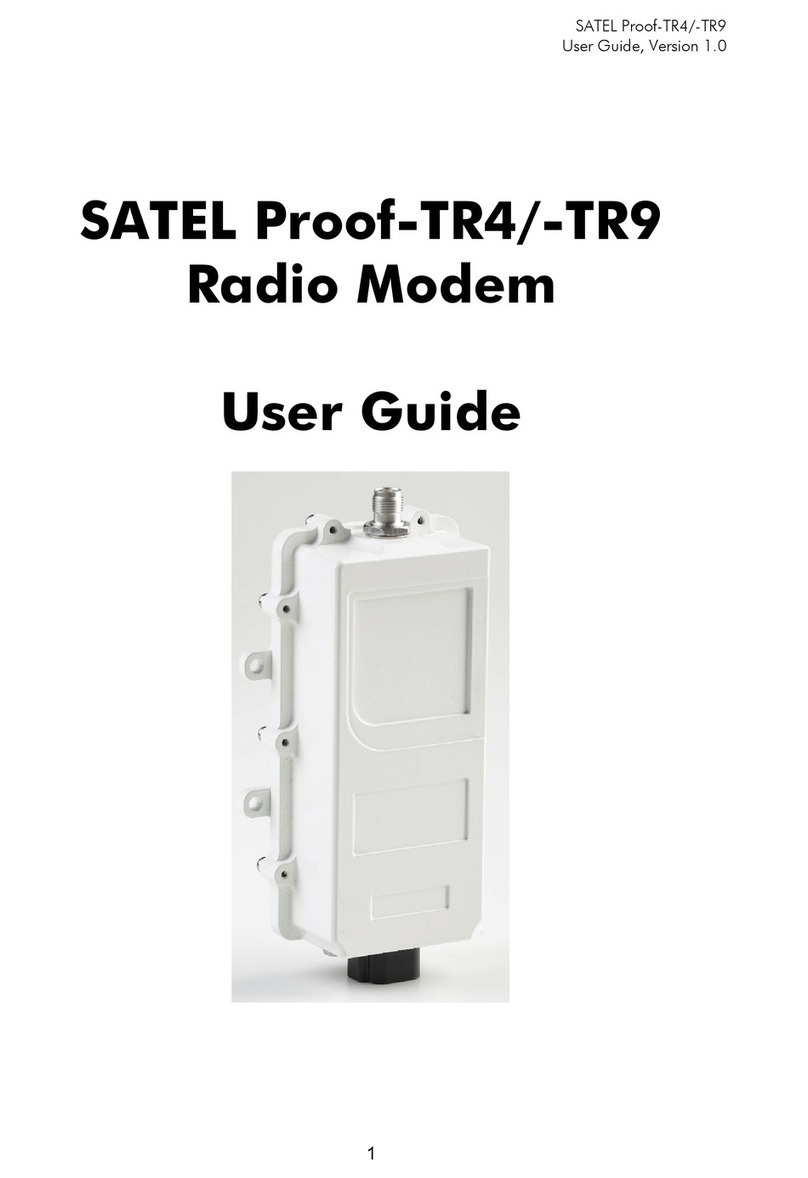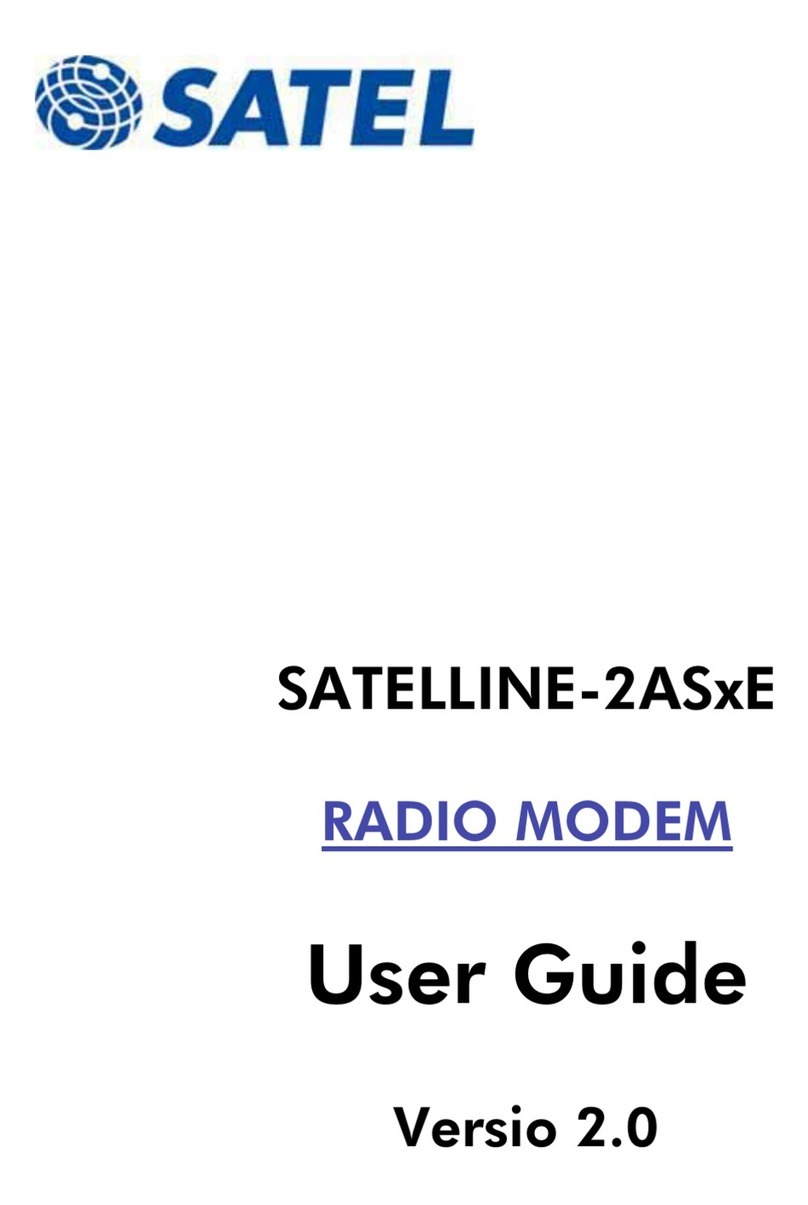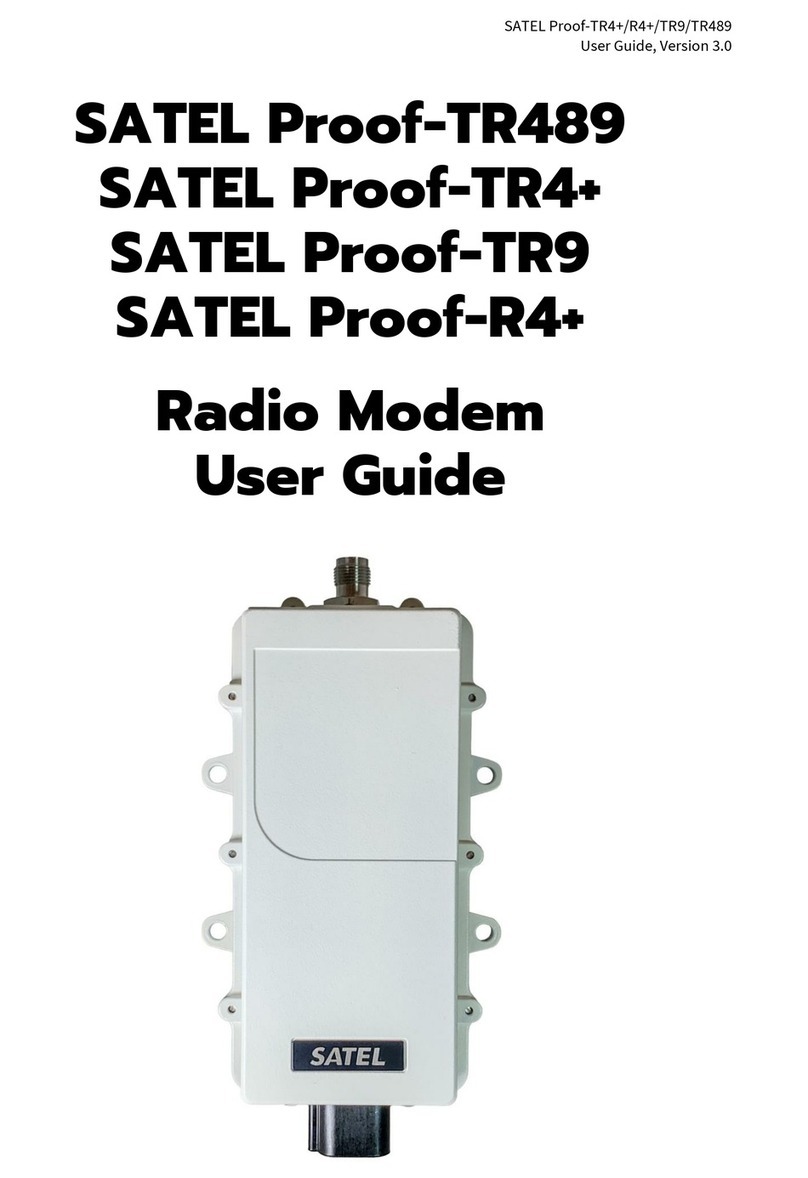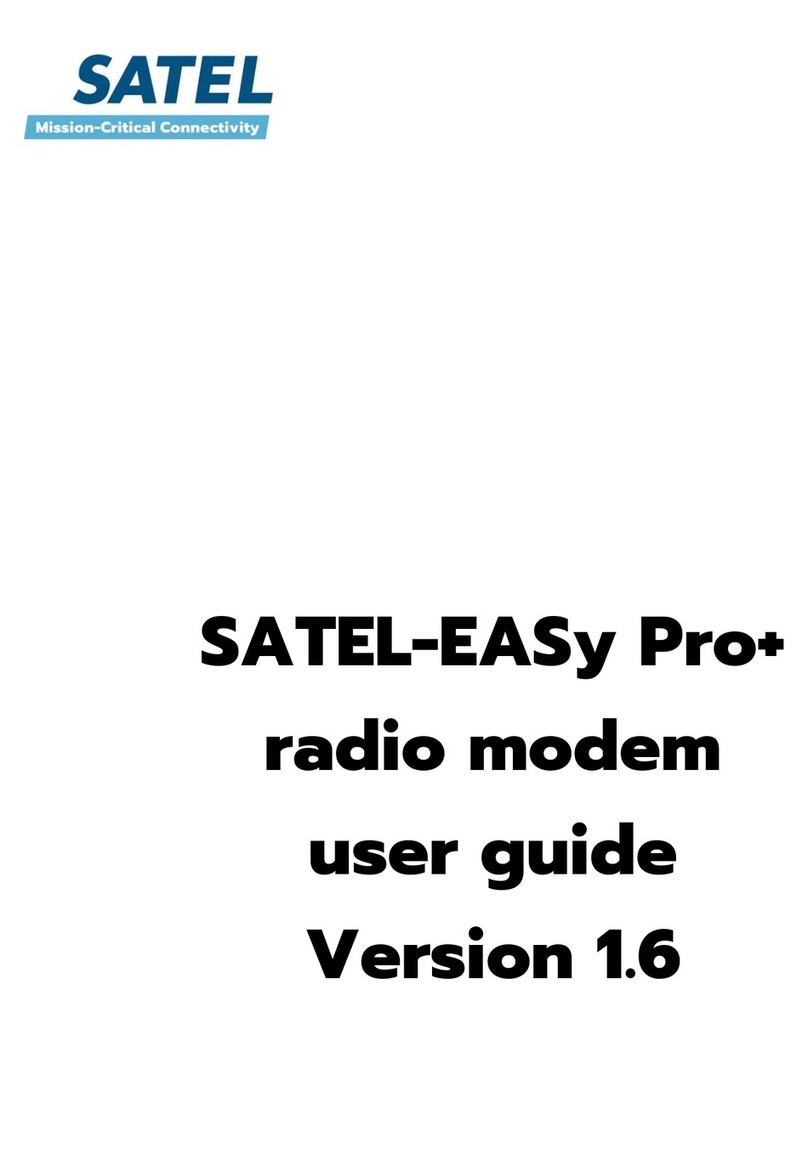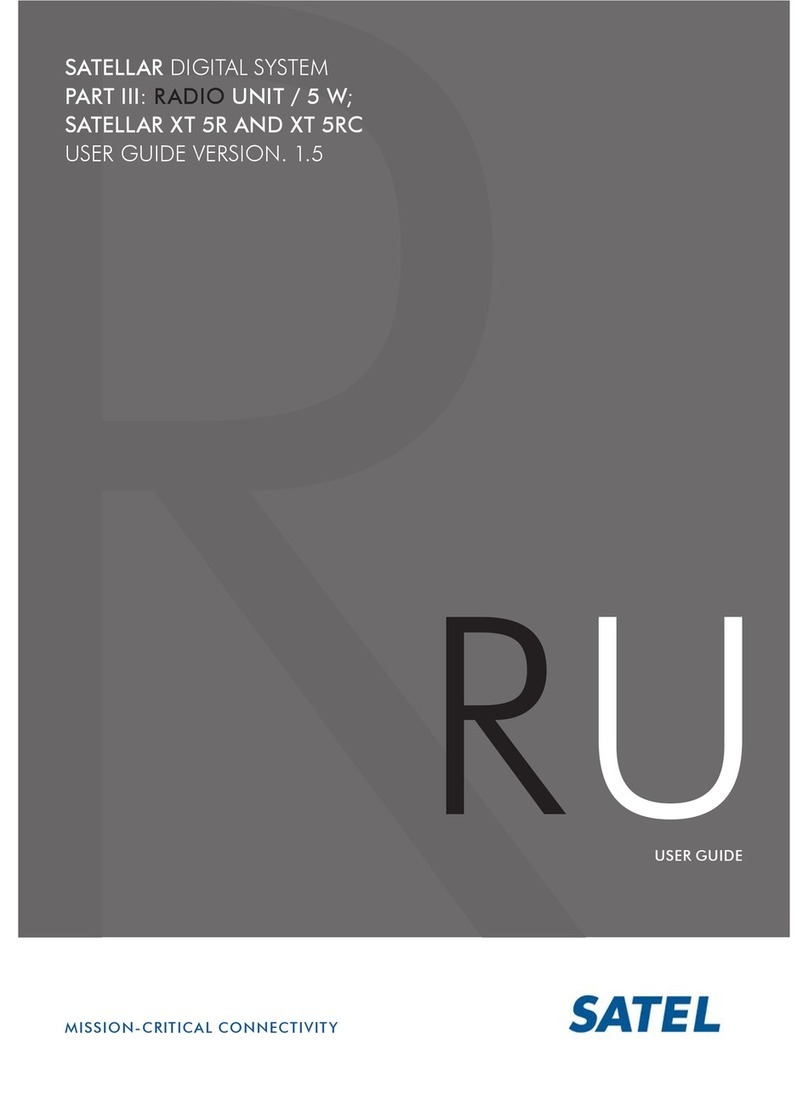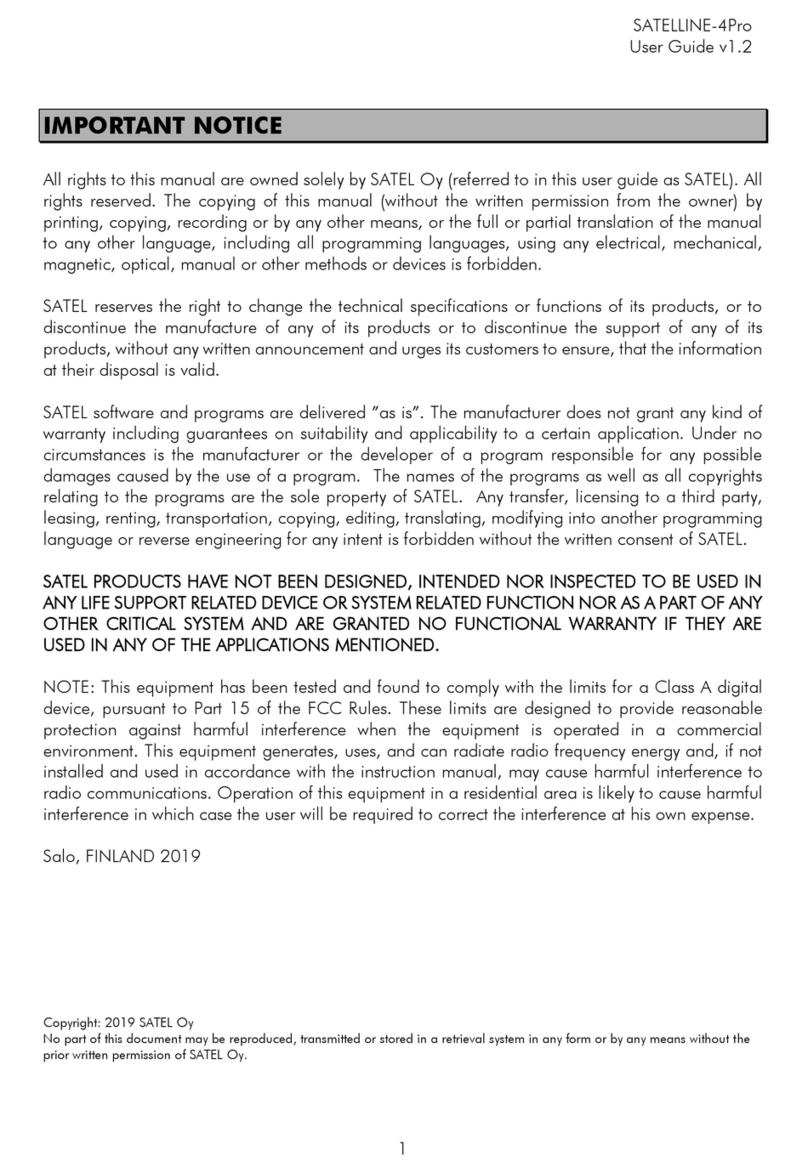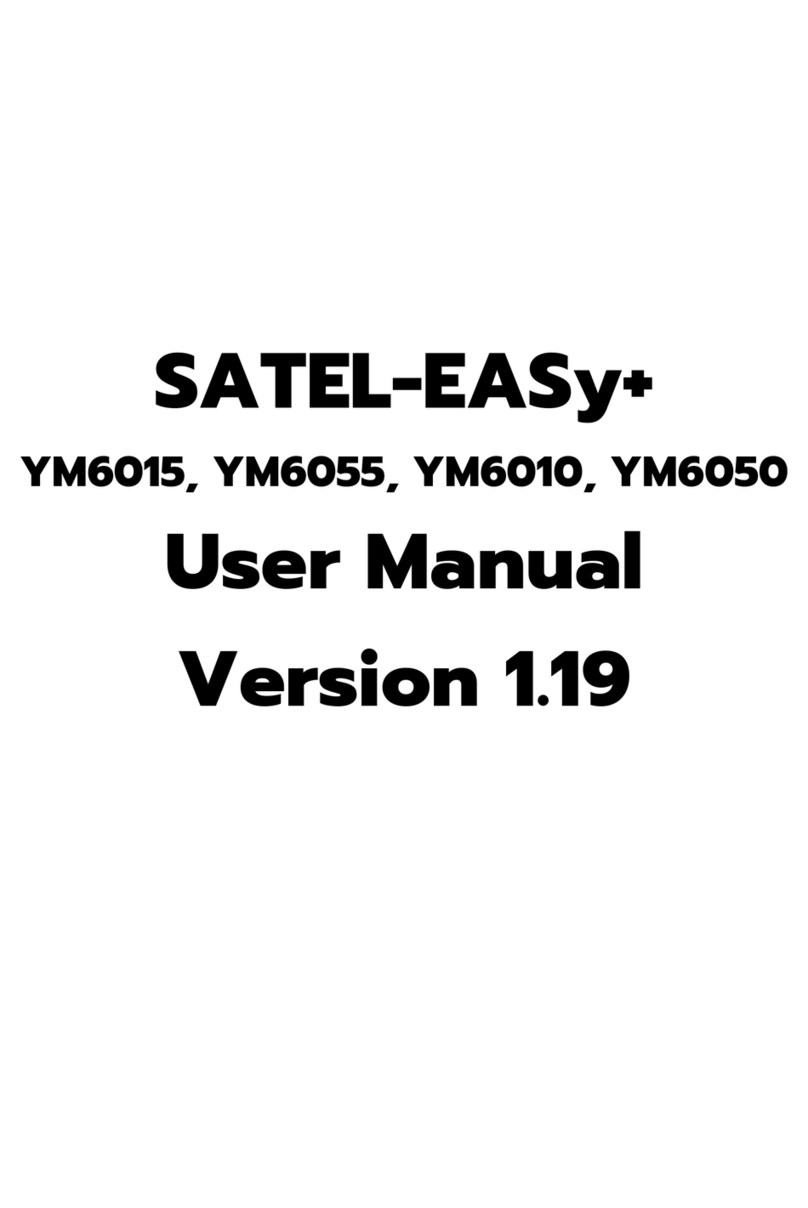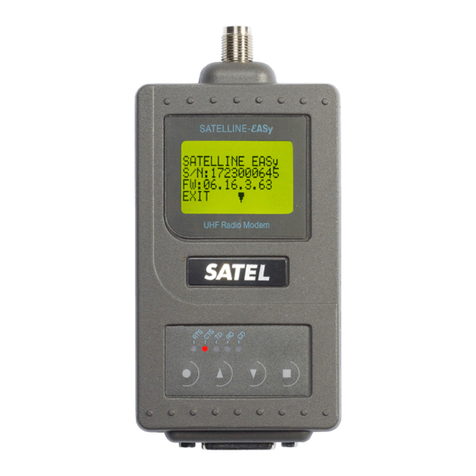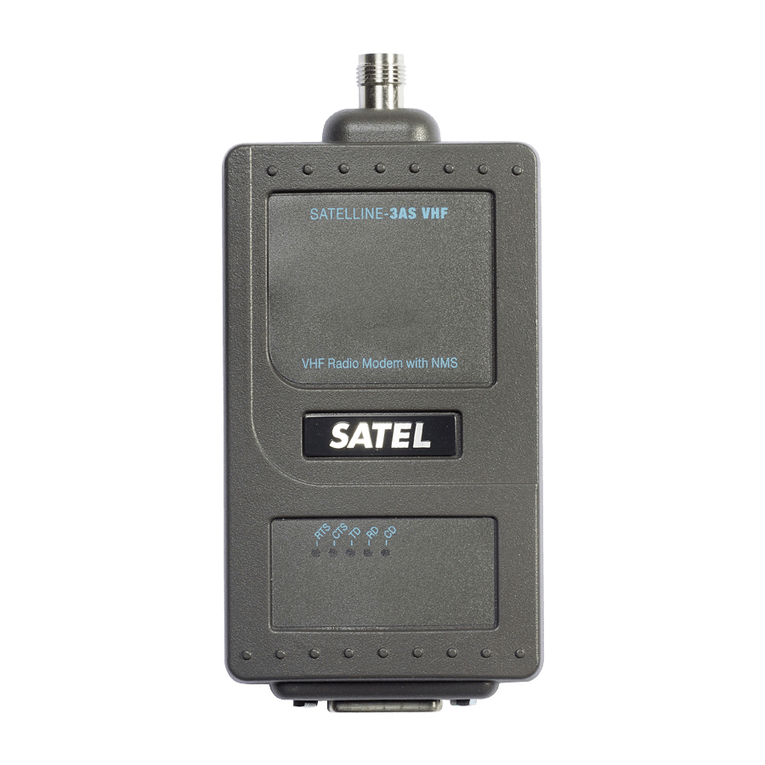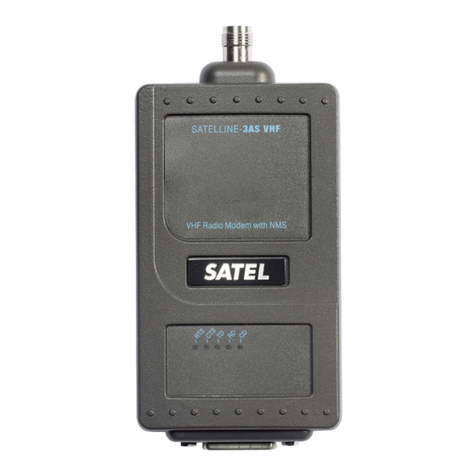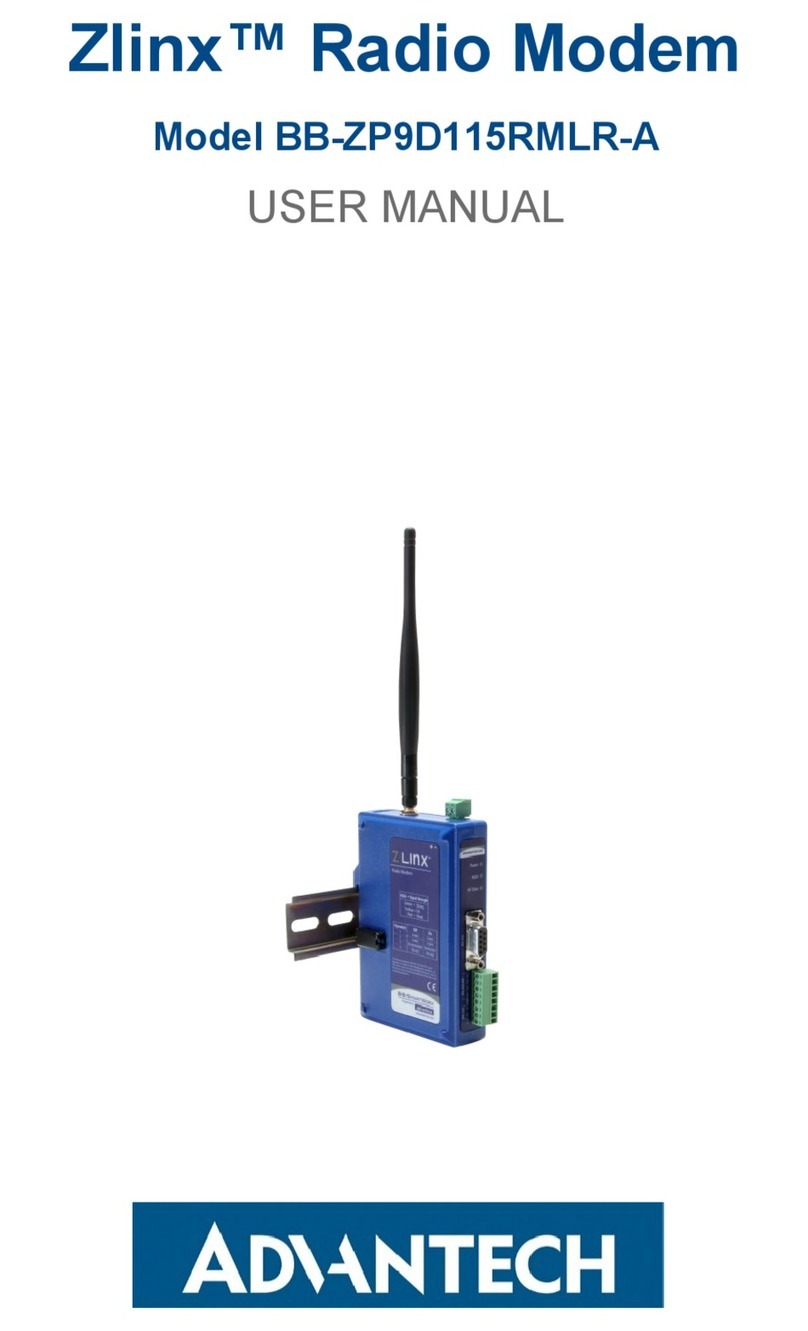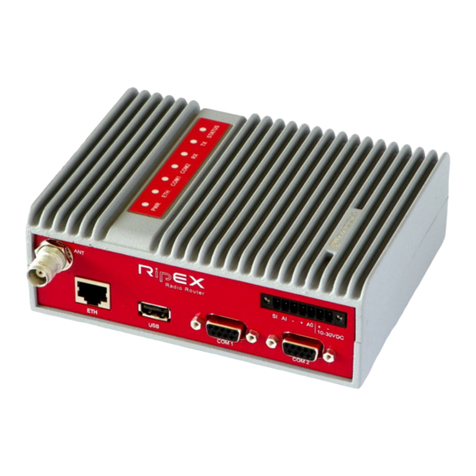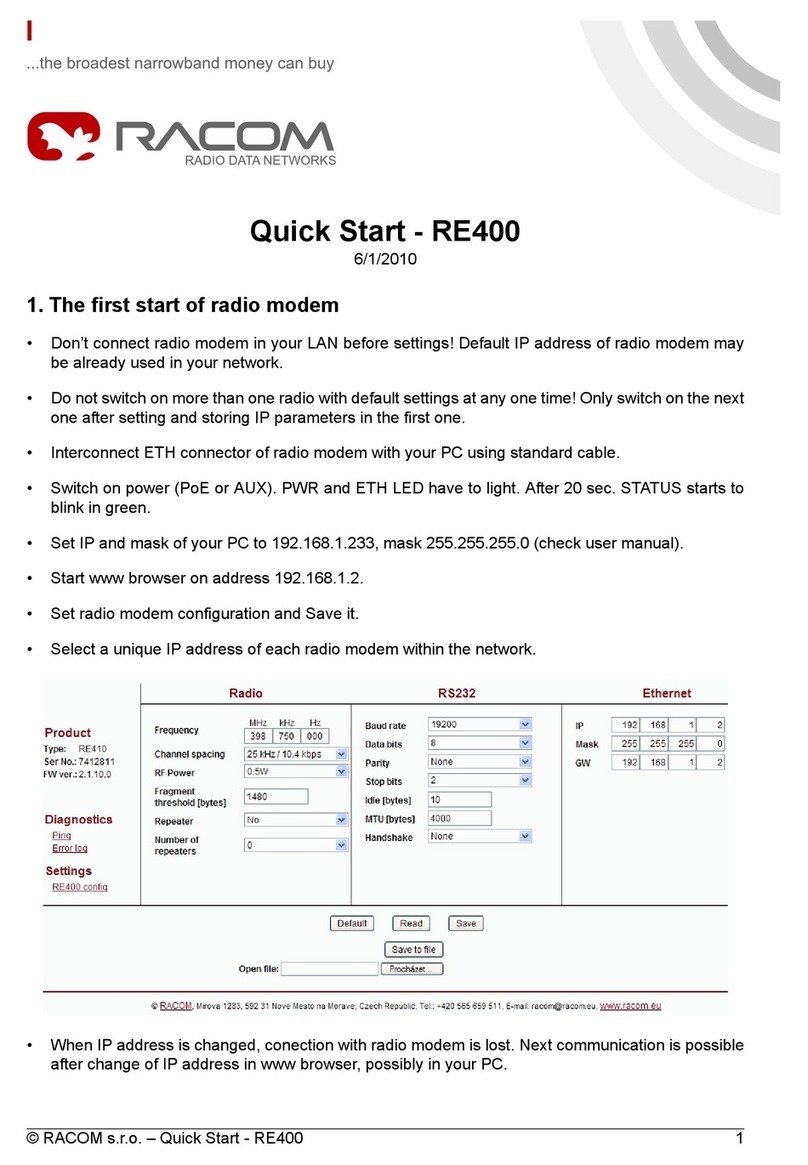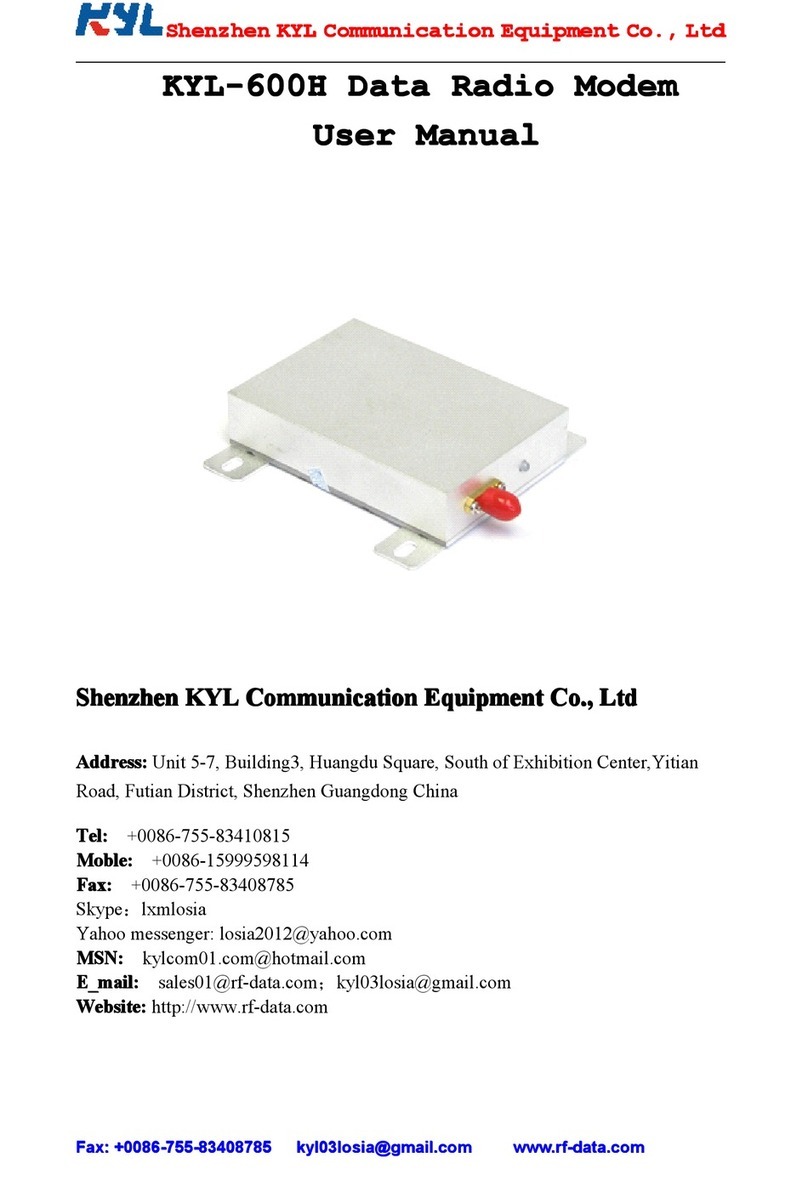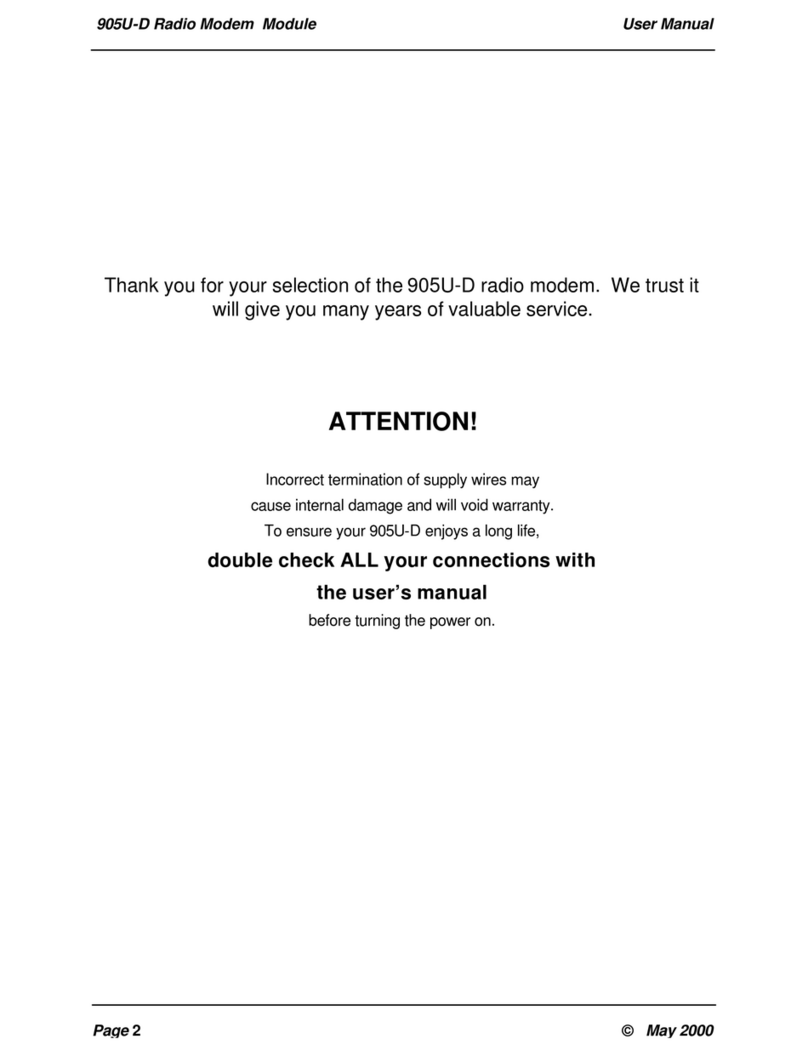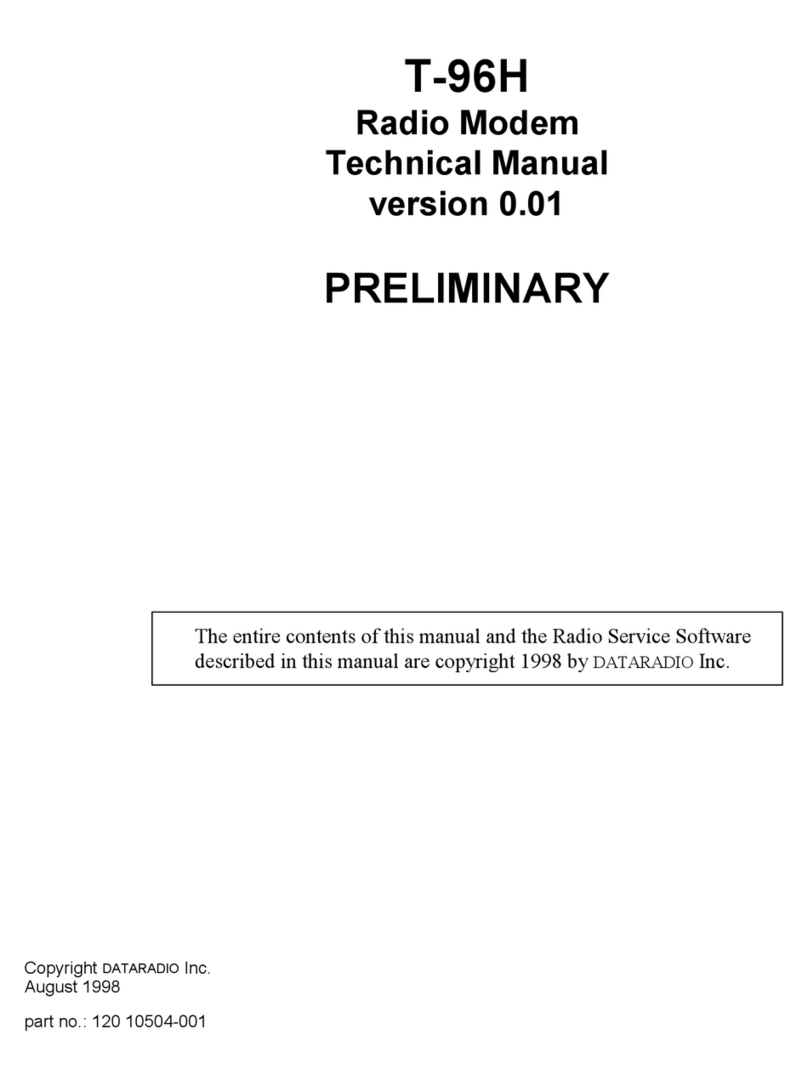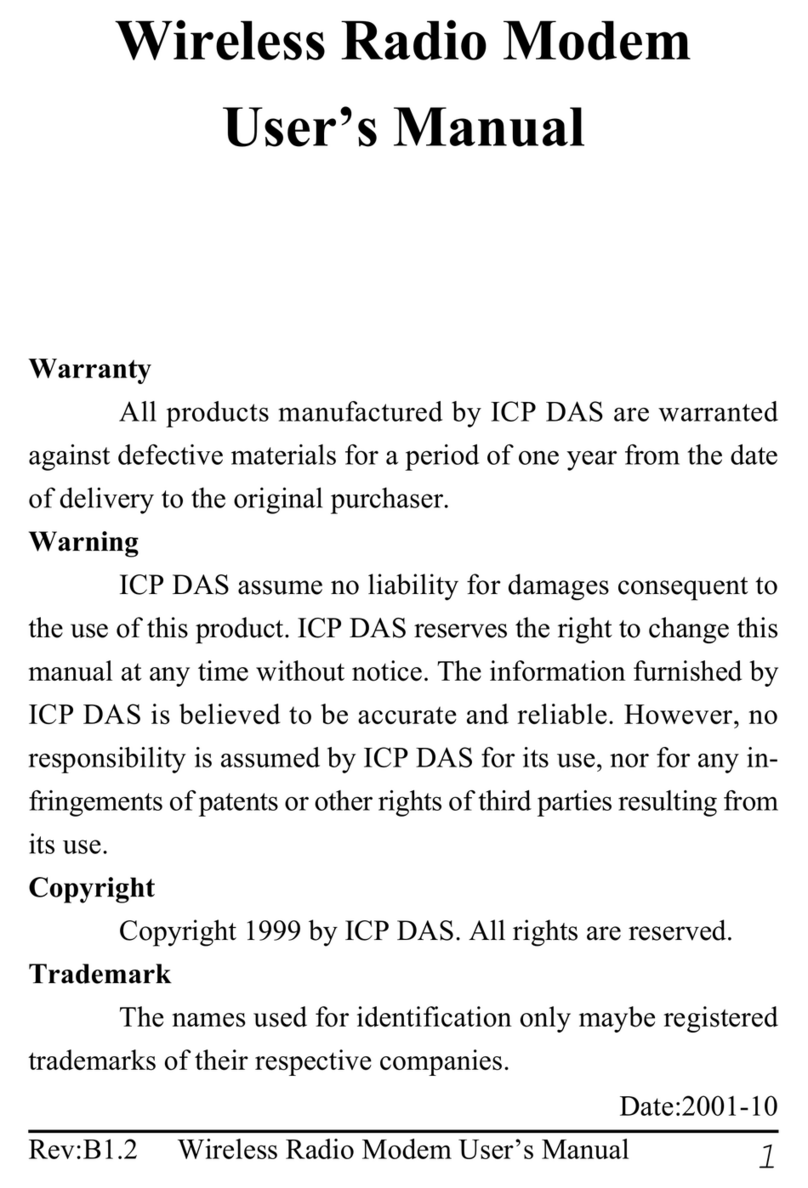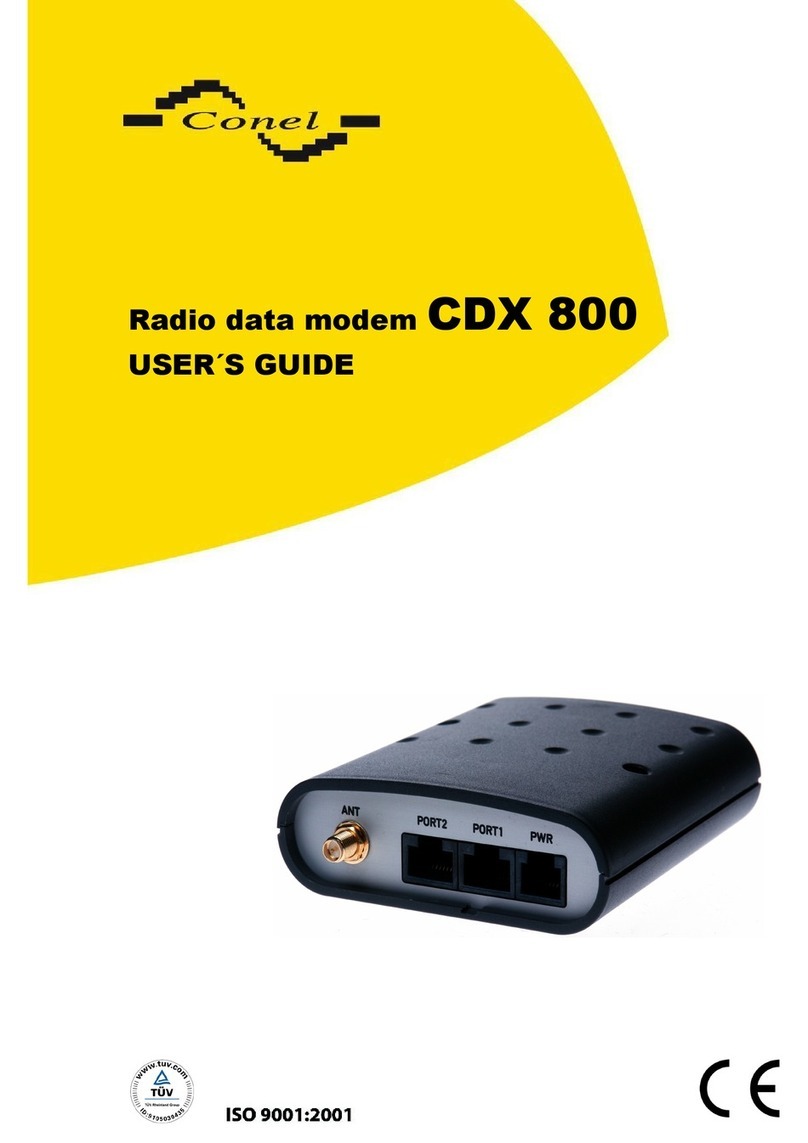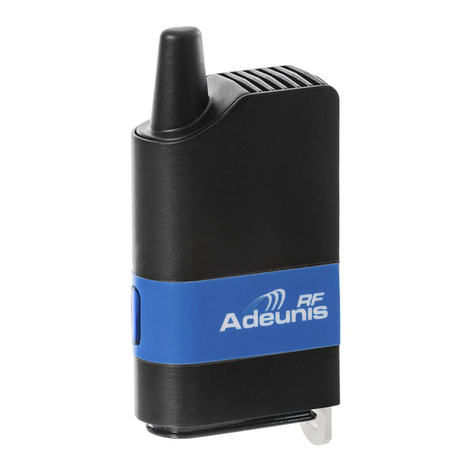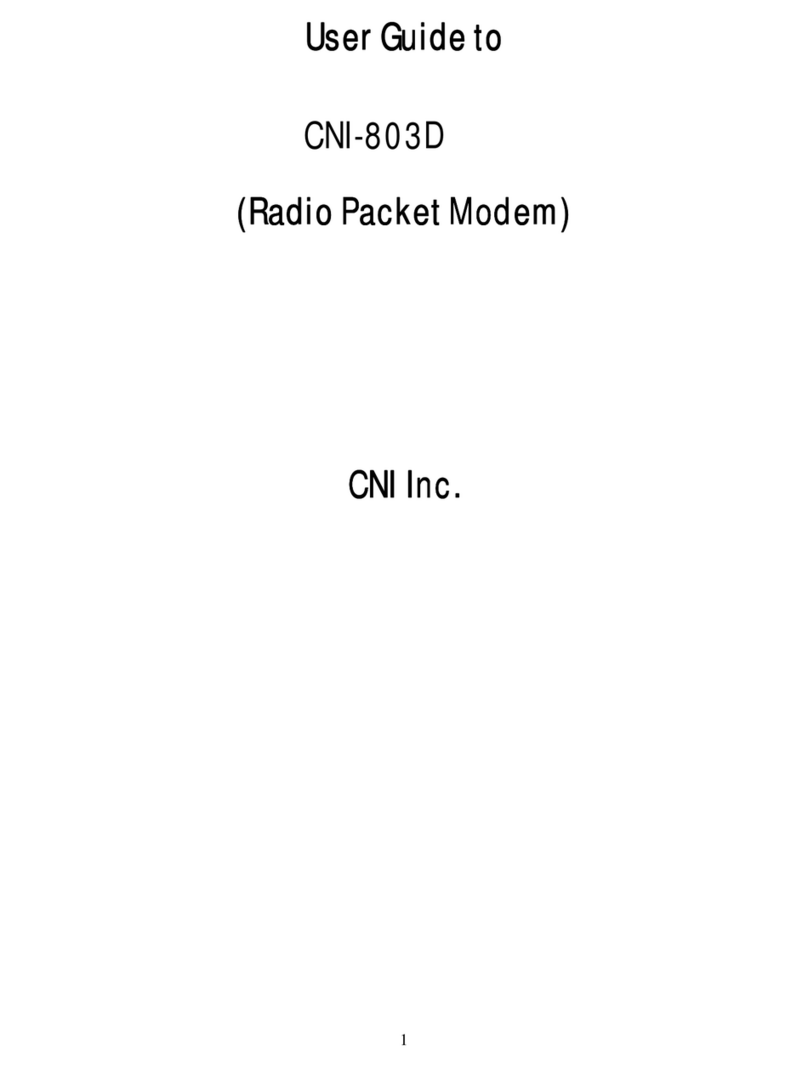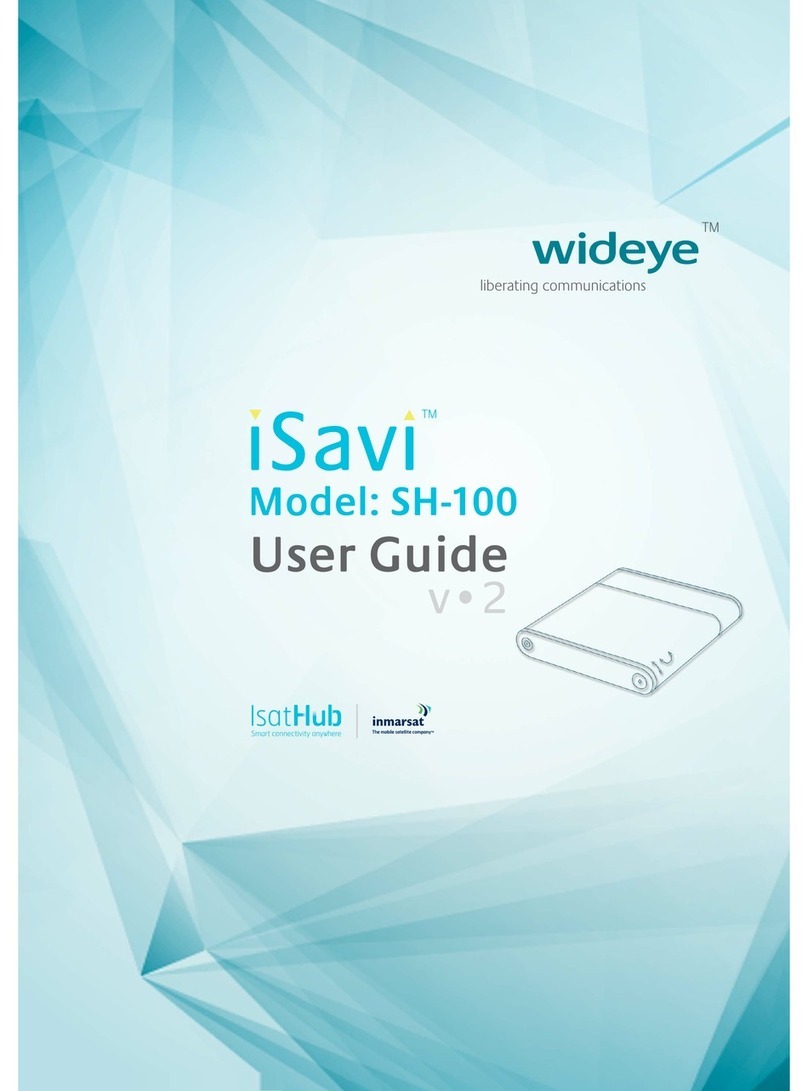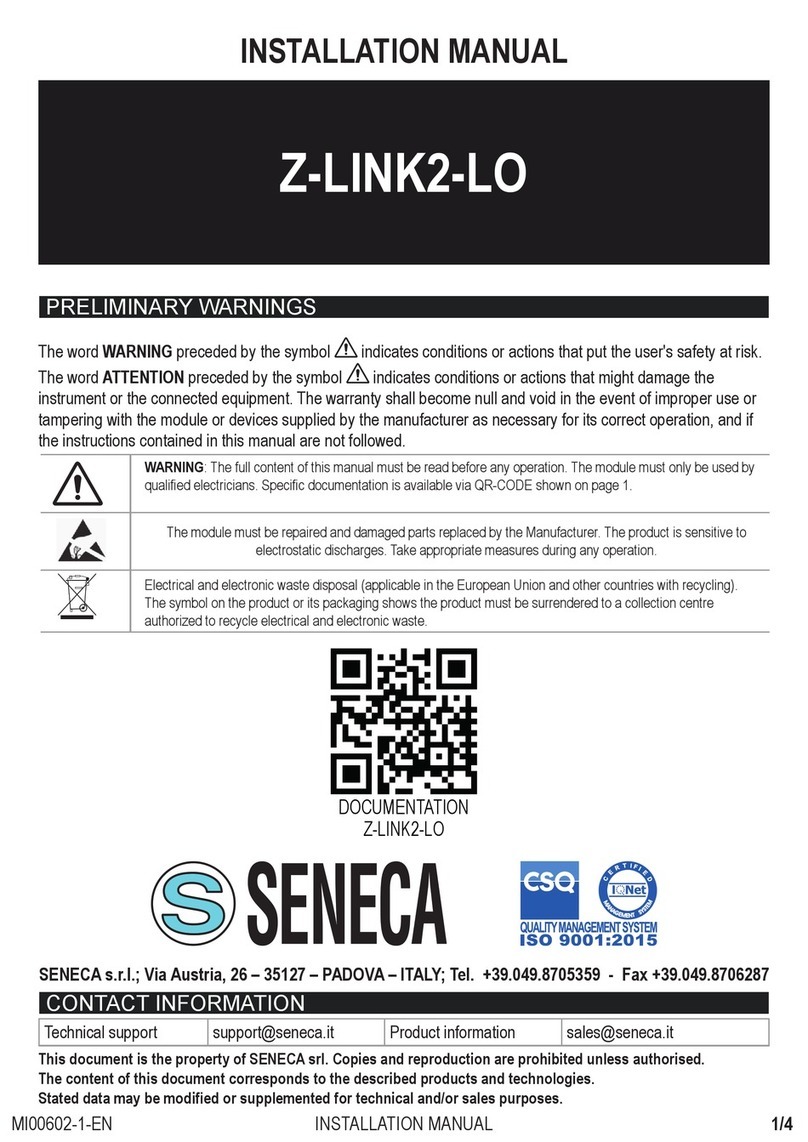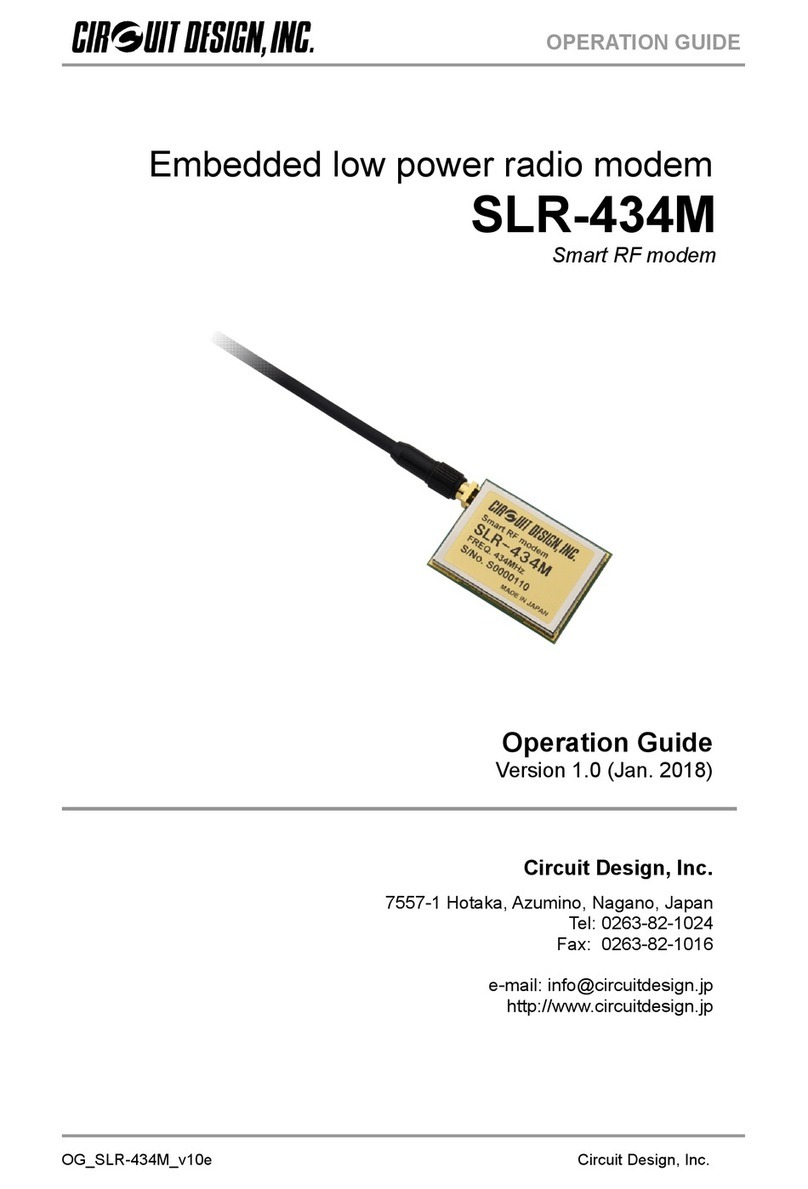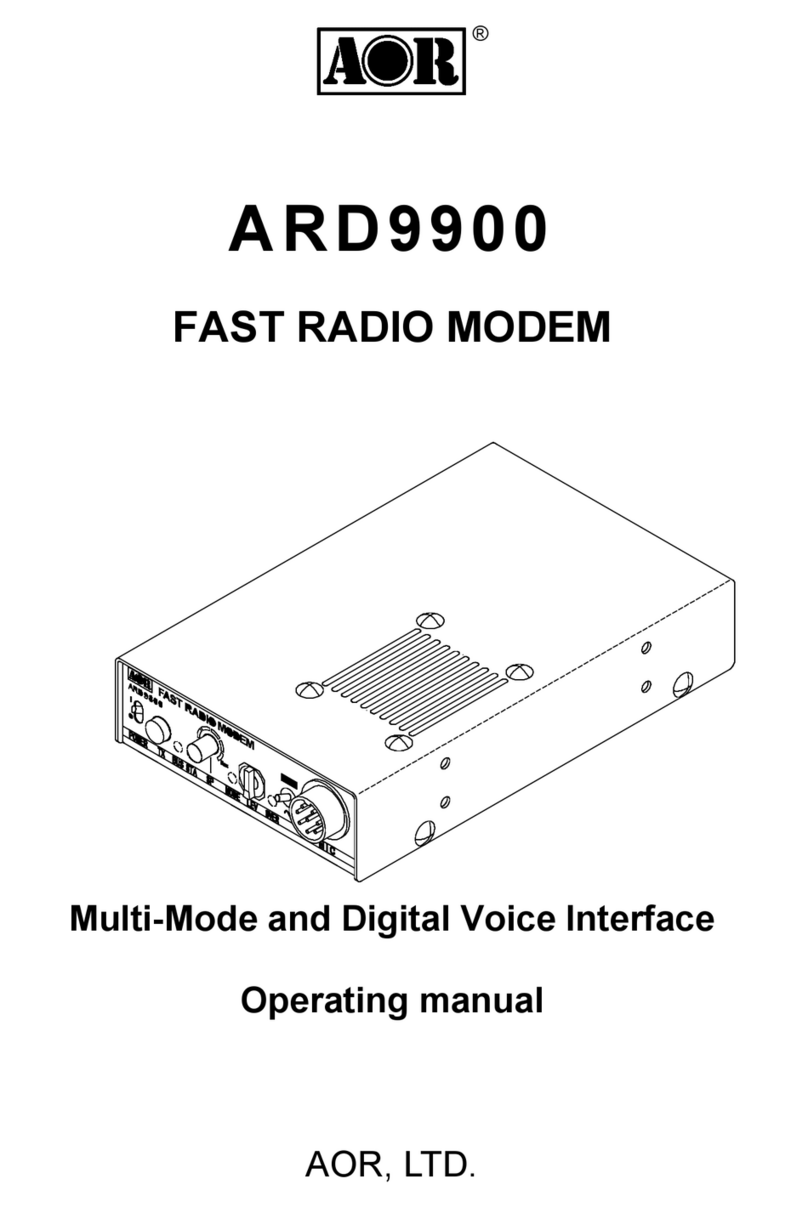TABLE OF CONTENTS
IMPORTANT NOTICE...........................................................................................1
RESTRICTIONS ON USE .......................................................................................2
DECLARATION OF CONFORMITY ........................................................................3
TABLE OF CONTENTS .........................................................................................4
1SATELLINE-3AS VHF......................................................................................6
1.1 TECHNICAL SPECIFICATIONS FOR SATELLINE-3AS VHF (YM5000) AND -3ASD VHF
(YM5010)........................................................................................................... 6
1.2 TECHNICAL SPECIFICATIONS FOR SATELLINE-3AS VHF C(YM5020) AND -3ASD VHF
C(YM5030) ....................................................................................................... 6
1.3 PINNING ORDER ......................................................................................... 7
2SATELLINE-3AS NMS AND EPIC NMS..............................................................8
2.1 TECHNICAL SPECIFICATIONS FOR SATELLINE-3AS NMS (YM1070) AND -3ASD NMS
(YM1075)........................................................................................................... 8
2.2 TECHNICAL SPECIFICATIONS FOR SATELLINE-3AS EPIC NMS (YM3010) AND -3ASD
EPIC NMS (YM3011) ............................................................................................ 8
2.3 TECHNICAL SPECIFICATIONS FOR SATELLINE-3AS EPIC CNMS (YM3012) AND -
3ASD EPIC CNMS (YM3013)................................................................................. 9
2.4 PINNING ORDER ....................................................................................... 10
3SATELLINE-3AS AND SATELLINE-3AS EPIC .....................................................11
3.1 TECHNICAL SPECIFICATIONS FOR SATELLINE-3AS (YM1011) AND -3ASD (YM1016)
11
3.2 TECHNICAL SPECIFICATIONS FOR SATELLINE-3AS EPIC (YM3000) AND -3ASD EPIC
(YM3001)......................................................................................................... 11
3.3 TECHNICAL SPECIFICATIONS FOR SATELLINE-3AS EPIC C(YM3002) AND -3ASD EPIC
C(YM3003) ..................................................................................................... 12
3.4 PINNING ORDER ....................................................................................... 13
4SATELLINE-EASY.........................................................................................14
4.1 TECHNICAL SPECIFICATIONS FOR SATELLINE-EASY (YM6500 WITHOUT DISPLAY AND
YM6550 WITH DISPLAY)........................................................................................ 14
4.2 PINNING ORDER ....................................................................................... 15
5SATELLINE-EASY 869 .................................................................................. 16
5.1 TECHNICAL SPECIFICATION FOR SATELLINE-EASY 869 (YM6501 WITHOUT DISPLAY
AND YM6551 WITH DISPLAY) ................................................................................. 16
5.2 PINNING ORDER ....................................................................................... 17
6SATELLINE-1870E....................................................................................... 18
6.1 TECHNICAL SPECIFICATIONS FOR SATELLINE-1870E (YM4010) ........................ 18
6.2 POWER CONSUMPTION FOR SATELLINE-1870E............................................. 18
6.3 PINNING ORDER ....................................................................................... 19
7SATELLINE-3ASD EPIC PRO AND –EASY PRO 35W .........................................20
7.1 TECHNICAL SPECIFICATION FOR SATELLINE-3ASD EPIC PRO (YM3040)............... 20
7.2 TECHNICAL SPECIFICATIONS FOR SATELLINE-EASY PRO 35W (YM6803)............. 20
7.3 DUTY CYCLE FOR SATELLINE-EASY PRO 35W................................................ 21
7.4 PINNING ORDERS ..................................................................................... 21
8SATEL COMPACT-PROOF ...........................................................................22
